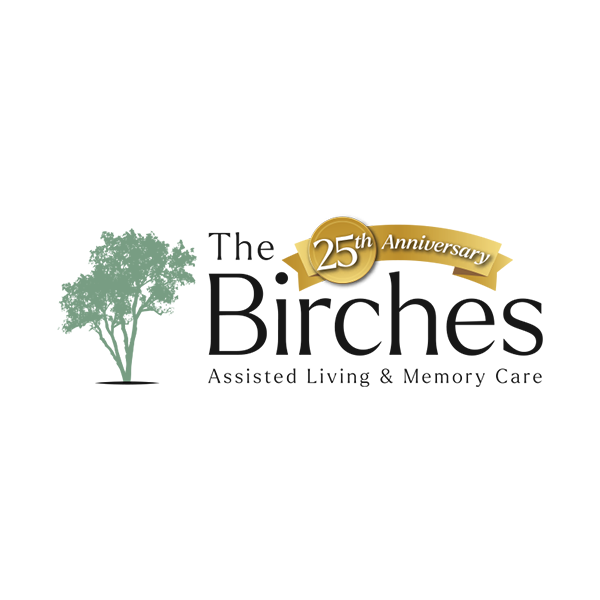What Is Art Therapy in Memory Care?
You want to express a thought or feeling but you can’t remember the words you need to say it. Or your friend is talking to you, but you can’t understand anything he’s saying. It’s like he’s speaking a foreign language.
Losing the ability to communicate is frustrating and isolating, and it happens to many people with dementia. But there is a way for people with dementia to express themselves without words— art therapy.
Once a month, residents in The Birches Memory Care neighborhood come together for this type of therapy, which allows them to express what’s going on inside of themselves without the need for verbal communication.
You’ve probably heard of art therapy before. It’s been popular in hospitals, schools and senior living communities for decades now. But what is it exactly?
Put simply, it’s therapy that helps people with mental, emotional or cognitive disorders communicate and express themselves through artistic activities. But don’t get it confused with a run-of-the-mill art class or coloring in your adult coloring book.
Benefits of Memory Care
All art has therapeutic benefits. But art therapy in memory care goes deeper than everyday artistic activities. The Birches, for example, has offered art-related activities to residents for many years now. But it just recently started a true art therapy program.
“The big difference between art and art therapy is that art therapy is led by a trained art therapist—someone who is not only an artist but a licensed therapist who is prepared to help people with all sorts of cognitive or emotional challenges,” said Schaff Fagan. “I’ve been wanting to bring in a professional art therapist for a couple of years now, and we finally found the funding to make that happen.”
The Birches’ Art Therapist, Rumi Clinton, has a Bachelor of Arts in Sculpture and Gender Studies, a Masters in Art Therapy and six years of experience in human services, working with everyone from rape survivors to war veterans. Because of her training, she’s able to consider the needs of different groups and tailor the art projects she creates (known in the art therapy world as directives) to those needs.
Art Therapy for Dementia
For people with dementia, Clinton likes to create directives that adapt easily to people at different stages of the disease. That often means creating art that is more abstract and less focused on the finished product. She also incorporates strong visual and tactile elements because this type of sensory stimulation has a proven calming effect on people with dementia.
Some of the art styles she’s done with Encore residents so far include painting, bleeding paper (making art with tissue paper and water), decoupage (decorating objects with paper cutouts), sculpture and felt collage.Her instruction style changes with people who have dementia too. With most groups, she likes to take a hands-off approach to give them space to create. But with people who have dementia, she likes to connect with them as much as possible, because it encourages participation.
“I was working with someone who’s nonverbal, and just smiling at them had a huge impact on how they were engaging with the material,” said Clinton. “There are a lot of small details in my approach that have become incredibly important working with this population.”
Art Therapy in Honor of an Artist and Beloved Birches Resident
Perhaps, the most uplifting aspect of The Birches’ Art Therapy program is how it came to be in the first place. After her mom passed away in 2017, Christine Jefferies was looking for a meaningful way to keep her memory alive. Jefferies’ mom, Lena Barton, moved to The Birches in 2013 and lived in Encore for the end of her time at The Birches.
Barton dedicated the last few decades of her life almost entirely to art. She took painting classes, studied the masters and even participated in a competition every year where she tried to duplicate a famous painting. She was a prolific painter who loved bold color and landscapes. And she brought many of her favorite paintings to her home at The Birches.
Since art was such an important part of Barton’s life, Jefferies knew that something artistic would be the best memorial for her mom. She spoke to Schaff Fagan, and they landed upon the perfect idea—art therapy.
“The Birches was so good to us—mom in particular. And then of course me, with the confidence I had in what they were providing, that I just thought, that’s her passion. We can see that it continues in some way,” said Jefferies.
Jefferies donated enough to fund The Birches’ Art Therapy program for an entire year. Schaff Fagan was able to officially start the Art Therapy program she’d wanted to for Encore residents, and Jefferies found a fitting way to keep her mom’s colorful, artistic memory alive.
“Mom’s life was filled with beauty, color and aesthetics,” said Jefferies. “That’s the way I remember my mom. Hospitable, funny, generous and colorful.
Residents with Dementia Benefit from Art Therapy
Like Barton, there are other Encore residents who have a background in art. But many don’t. And artistic talent is far from the point.
In fact, Clinton encourages anyone participating in art therapy—whether they have dementia or not—to forget about the finished product. Art therapy isn’t about creating great art. It’s about expression, connection and happiness— even if it’s just for a moment. That’s what makes it therapeutic.
“There are a lot of laughs. There are a lot of smiles,” said Clinton. “So, it feels like there’s an impact in the moment, and that’s really all I’m looking for.”
Want to read more inspiring stories about how Birches residents stay active, creative and engaged? Check out the art project Encore residents did for National Garden Week.


